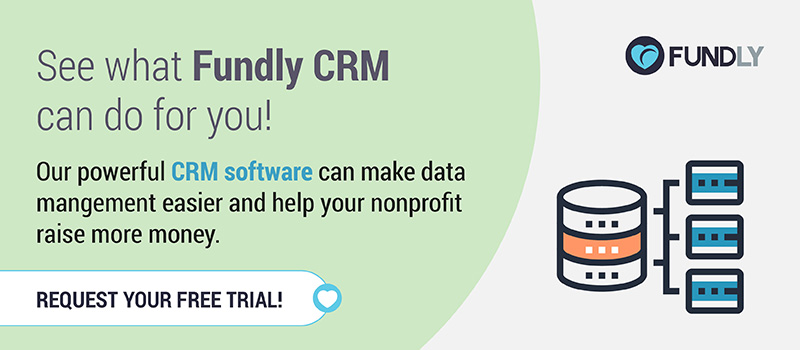The Top 6 Nonprofit Web Design Tips for Crowdfunding Campaigns

The ultimate goal of any nonprofit website is to convince supporters to take the desired action, whether that be signing up for an email newsletter, registering for a volunteer opportunity, or anything in between.
No matter what your goals, your website must be carefully structured and designed if your organization expects to reach the ideal outcome.
If that outcome happens to be increasing visibility and scoring more donations to your nonprofit’s crowdfunding campaign, you’ve come to the right place!
In this article, we’ll give you 6 tips that will help you design your website in a way that’s conducive to crowdfunding success, including:
- Make sure your donation page is easy to get to.
- Use your crowdfunding campaign to keep your website current.
- Pack an emotional punch.
- Standardize branding.
- Keep mobile in mind.
- Provide crowdfunding donors with other ways to get involved.
Let’s jump in!
1. Make sure your donation page is easy to get to.
Why it’s crucial:
Considering that crowdfunding relies on a large number of donors to be successful, campaign visibility and accessibility are arguably more important with crowdfunding campaigns than they are with other fundraisers.
To maximize donations to your campaign, your organization must make the giving experience as easy as possible for your donors.
If supporters have to search your website endlessly to find your crowdfunding page, chances are that they won’t even land on the donation form, nevertheless hit the “Submit” button.
Point is, a giving experience that is frustrating in any way is much more likely to be abandoned before the gift has been made, which won’t do much to further your crowdfunding campaign!
How it’s done:
If securing more donations to your crowdfunding campaign is your organization’s main website goal, treat it as the centerpiece!
The key here is to make your crowdfunding page as visible as possible (organically, of course). You should provide supporters with multiple pathways to access your campaign donation form.
For example, you might give supporters the option to access your page by:
- Including a call-to-action and a link to your campaign page on your homepage.
- Adding information about your crowdfunding campaign to your “Ways to Give” page.
- Featuring a “Donate Now” button in your top navigation that specifically links out to your crowdfunding page.
Of course, this list certainly doesn’t cover all of the options. If there’s a natural opportunity to lead website visitors to your crowdfunding campaign donation form, then by all means, guide them!
To sum up: Ensuring that your navigation structure clearly points website visitors to your crowdfunding page will result in more donations to your campaign, since supporters will know exactly where to go to embark on the donation process.
2. Use your crowdfunding campaign to keep your website current.
Why it’s crucial:
Amidst a million other important efforts and concerns, it can be all-too-easy to forget to update your website… or to simply sweep updating under the rug.
However, updating your website is crucial to its effectiveness. You need to update regularly to reassure donors that your organization is still active and interested in keeping them in the loop with what’s going on at your nonprofit.
Furthermore, an out-of-date website can make your organization appear less credible. Think about it: have you ever landed on a business’ website that looks like it hasn’t been updated since 1999? You probably weren’t too inclined to believe that that company was up with the times and a current expert in their product or field.
Point is, regularly updating your website can be a difficult feat, but the potential ramifications of not updating can be even greater.
How it’s done:
Luckily, your crowdfunding campaign will give your organization plenty of material for updating your website!
As we’ve discussed in a previous post, it’s important to regularly give your supporters updates during your crowdfunding campaign. Doing so keeps them oriented with your progress and demonstrates the results of their contributions in a more tangible way, both of which lead to a more invested base of donors.
You can repurpose the updates from your crowdfunding campaign to generate new content for your website. For example, you could update your homepage daily to share current campaign progress or publish a series of news articles to your blog about the positive work that crowdfunding donations have already made possible.
And those are only a couple of the possibilities! No matter how you choose to leverage them, crowdfunding updates give you the fodder you need to keep your website current.
Additionally, if your website needs a design update, you can work with a nonprofit technology consultant to create an up-to-date website. These web design and tech-savvy consultants can not only help you refresh your design but also come up with solutions on how to link to your crowdfunding campaign.
For instance, they can step up a donation form that allows supporters to give to your crowdfunding campaign without leaving your website! All you’ll have to do is update your fundraising goal on your crowdfunding platform.
Check out this list of potential candidates to learn more about hiring a nonprofit technology consultant.
To sum up: By using news from your crowdfunding campaign, updating your organization’s website on a regular basis will be much more manageable.
3. Pack an emotional punch.
Why it’s crucial:
People are often motivated to give charitably because nonprofit causes tug at their heartstrings in some way. In other words, supporting nonprofits is usually (at least in part) an emotionally-charged pursuit.
That being the case, organizations generally do better at engaging their supporters and convincing them to give when they make an emotional appeal as opposed to a logical one.
By packing an emotional punch with your content, chances are that your website will be more impactful to your donors—both when it comes to conveying your message and encouraging more donations. After all, it’s those visceral reactions that lead to impulse giving!
While designing your website around an emotional appeal won’t directly influence the success of your crowdfunding campaign, it can aid it indirectly. The more you can inspire donors with your cause and impassion them with your mission, the more likely they are to donate to your campaigns.
How it’s done:
Take a nod from your crowdfunding campaign page, and make sure to tell your story through words and photos on your website.
While you should do so throughout your site, appealing to your supporters’ emotions is especially important on your homepage. The very first impression your visitors will have of your website is the look and layout of your homepage, so it’s important to get your message across immediately.
Design your homepage around an emotionally-charged photo of your work or those you serve, and make sure to include a shortened version of your mission statement above the fold (the part of the webpage that visitors can see without scrolling).
As One Project, an organization committed to supporting secondary survivors of sexual assault, perfectly portrays their work in an emotionally compelling way on their homepage:
If you’re still in the market for more examples of successful, emotionally-charged nonprofit websites, you’re in luck. You can check out this excellent resource with 200 of the best nonprofit websites of the year, broken out by organizational focus (i.e., international, environmental, animals, etc.).
Whether you review sites through that resource or through other means, the important thing is that you’re analyzing industry-wide best practices and drawing inspiration from the great work of your peers. See what your colleagues in the field have done with their sites, and find ways to leverage those techniques to tell your nonprofit’s emotional story.
To sum up: Nonprofit work is emotional by nature. Increase the chances that website visitors will be swayed by your cause by using compelling stories and images to pack an emotional punch, particularly on your homepage.
4. Standardize branding.
Why it’s crucial:
As all nonprofits know, building trust is key to securing donations. This is especially true for online donations, which are more impersonal since there’s no aspect of face-to-face interaction to help donors feel secure.
If your organization wants to maximize the number of online donations received (and we’re assuming you do!), you must do everything in your power to make your website appear as trustworthy as possible to your donors.
Standardizing branding across your website is one of the most straightforward ways to do just that.
By keeping branding consistent across the board, it becomes a seal of trust. When donors see your look and logo across all pages of your website, they’ll be consistently reminded that they’re investing in a credible cause they care about.
How it’s done:
All pages of your website should have the same look and feel, derived from your logo.
Before you start designing, consider creating a style guide that outlines all design standards. Here are just a few of the many things you’ll probably want to think about:
- Color scheme. Color schemes should be based on your logo and include no more than 5-6 colors. There should be 2-3 main colors (brights) as well as an array of neutrals to complement them.
- Color usage. Beyond simply having a scheme to work with, you should determine which elements will appear in which colors. For example, what colors will donation buttons and other CTAs be? Hyperlinks?
- Font. Use one font throughout your website, and stick with it. When selecting a font, keep in mind that sans serif fonts are more legible on screens.
- Images. What types of images will your organization use on your website? Should images be shaped, sized, or formatted in a particular way? Where will images be sourced from? Do you need to secure any permissions? These questions all need to be answered in your style guide!
Once you’ve got your style guide, it’s time to decide how you’ll brand your donation forms. There are two routes your organization can take: hire a web design firm or build your own forms using the built-in customization tools available with your fundraising software.
If you don’t have much design experience or CSS and HTML knowledge, we highly recommend hiring a web design professional. This person can help you maintain a cohesive design throughout all your donation forms and create custom solutions that are tailored to your organization.
Completing the design in-house? Check out this list of amazing websites to get ideas on how you can brand your website’s donation forms.
Important: don’t forget to brand your crowdfunding campaign page, too! Considering that donors are submitting their sensitive information there, they’ll feel much more comfortable giving when your form clearly reflects your organization.
To sum up: Clear and consistent branding across your website builds trust because donors can be certain that they’re supporting a credible nonprofit.
5. Keep mobile in mind.
Why it’s crucial:
Now that mobile phones are so advanced, more and more people are using them to browse the web on the go.
In fact, it’s been estimated that a majority of browsers are now visiting nonprofit websites from mobile devices. The problem is that many nonprofits haven’t yet caught up with the times and optimized their websites (including their donation pages) for mobile users.
It might not seem like a deal breaker at first, but a website that isn’t mobile-responsive can cause your crowdfunding donations (and online contributions in general) to take a hit. Websites that aren’t mobile-friendly aren’t user-friendly, so mobile donors are much more likely to become frustrated and leave the site before submitting their donations.
Think about it: wouldn’t you be much less inclined to give if you had to zoom and pinch your screen, scroll up, down, left, and right, and fill out a bunch of tiny, illegible boxes to make a donation?
How it’s done:
How you build a mobile-responsive website will be dependent on how your nonprofit is approaching web design.
If you’re…
- Designing your website yourself, the website builder that your organization is using should use a responsive design framework that automatically conforms your site to the device it’s being viewed on. However, just because you have this feature doesn’t necessarily mean that your site will translate well to mobile, so be sure to keep mobile in mind as you’re designing.
- Working with a web design firm, make sure to select a firm who offers mobile-responsive design. Most firms should offer this service now that mobile is so prevalent, but it can’t hurt to double-check!
Remember: the best way to tell if your site is actually mobile-responsive is to test it out for yourself. Take out your smartphone and try donating to your crowdfunding campaign!
To sum up: Mobile-responsive websites provide mobile donors with the best possible user experience. When donating to your crowdfunding campaign is easy, donors will be much more likely to follow through!
6. Provide crowdfunding donors with other ways to get involved.
Why it’s crucial:
Crowdfunding campaigns can really give your donor acquisition a boost. These campaigns require widespread sharing and are low-stakes for donors, so they’re the ideal opportunity to recruit a lot of new donors to your cause.
In order to transform one-time crowdfunding donors into donors who give again and again, it’s crucial to actively continue building relationships with them. One of the best ways to do that through your website is by offering supporters other opportunities to get involved with your organization!
Not to mention, some supporters who land on your website might want to support your organization, but might not be ready to make a monetary gift. By providing a variety of engagement opportunities on your website, you can win the support of people with a variety of preferences.
How it’s done:
Post-donation engagement opportunities don’t even have to be limited to your acknowledgement page! In fact, they should be incorporated throughout your website.
The key is to match up your webpages with relevant opportunities. Some opportunities might be relevant across the board (for example, an email newsletter subscription box might remain at the bottom of the site on every page), while others would be very specific to certain pages (for example, the opportunity to volunteer for an event might only be limited to a dedicated volunteer information page).
No matter where you place them, all opportunities should be framed as calls-to-action (CTAs). Use short, clear, and actionable language to ensure that donors will understand exactly what you’re requesting.
With the right CTAs, who knows? That supporter who came only intending to give $5 to your crowdfunding campaign might be transformed into a lifelong volunteer!
To sum up: Including other engagement opportunities around your website actively continues the conversation both before and after crowdfunding campaign donors have given. With a wealth of thoughtful engagement opportunities backing you up, you should have a larger base of recurring donors to rely on for your next campaign!
Your nonprofit’s website strategy can greatly influence how much money you’re able to raise during your crowdfunding campaign. With these 6 tips, your website should be conducive to crowdfunding success.
For more information about planning your crowdfunding campaign, check out these additional resources:
- 3 Crowdfunding Campaign Page Writing Tips to Captivate Donors. Looking for more advice on how to write a compelling crowdfunding page? Fundly’s guide has all the tips and tricks you need to grab your donors’ attention.
- 3 Strategies to Pull Your Crowdfunding Campaign Out of a Slump. Let’s face it: every crowdfunding fundraiser is going to experience a lull in donations, but how you react to this slump can greatly affect the outcome of your campaign. Learn how you can heighten the buzz surrounding your campaign in just three simple steps.
- Top 7 Salesforce Apps and Integrations for Nonprofits. If your organization is using Salesforce, did you know you can connect your Fundly campaign to your CRM? Learn about more ways you can boost your Salesforce tool with seven apps and integrations.
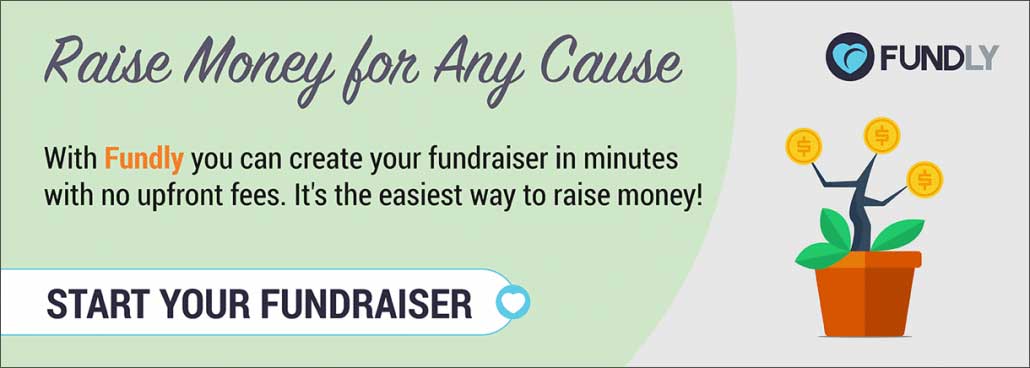

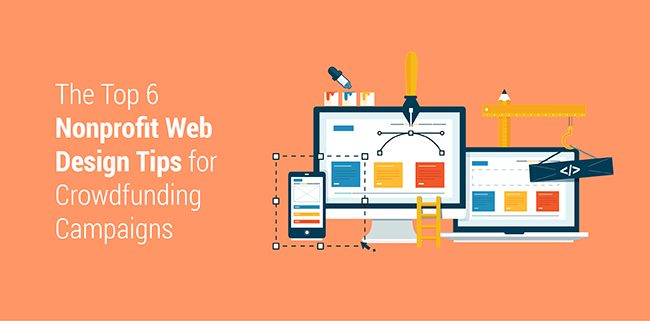



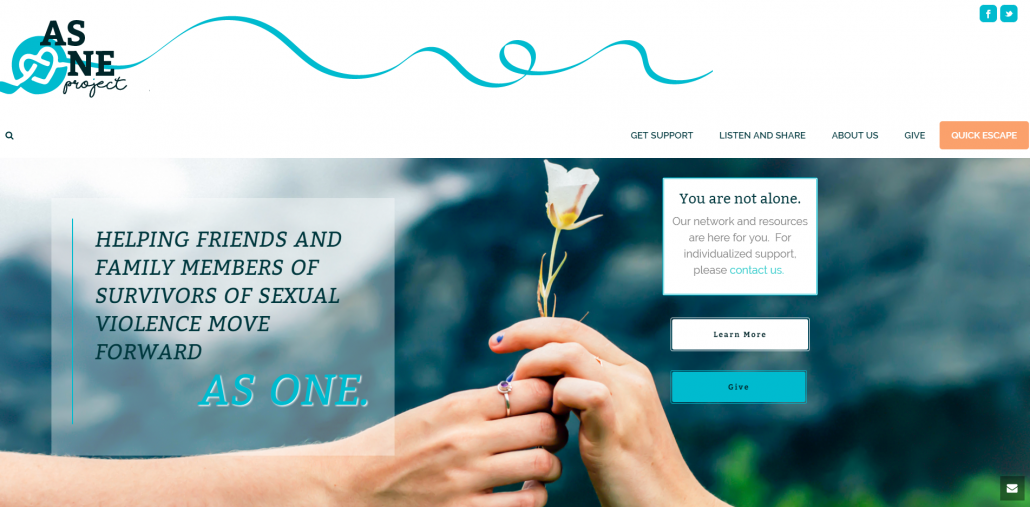







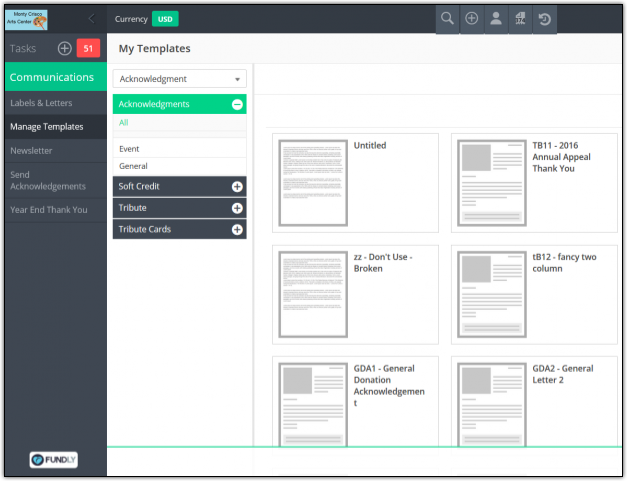

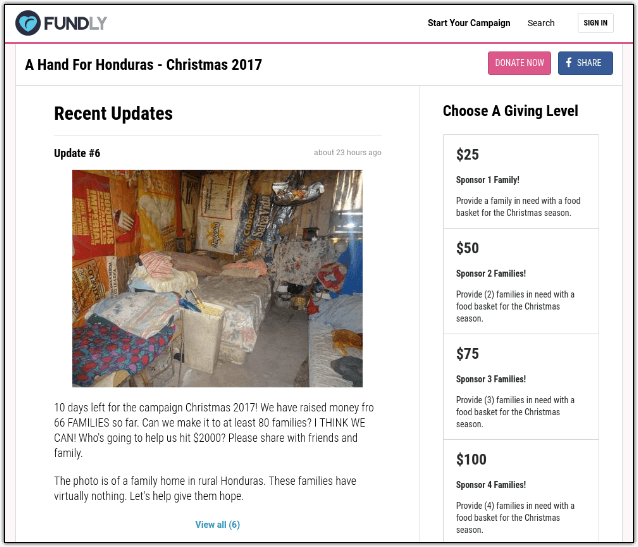



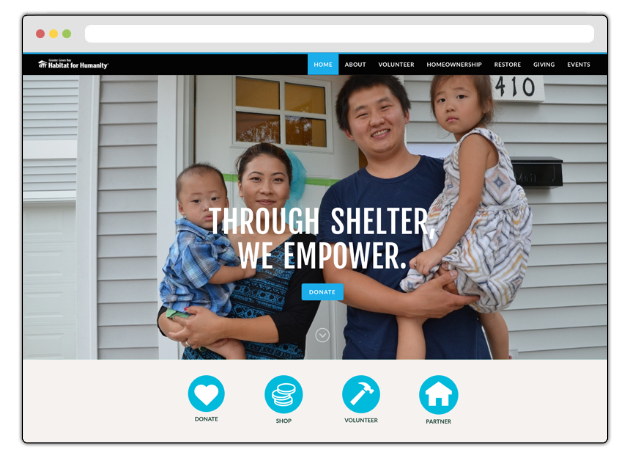




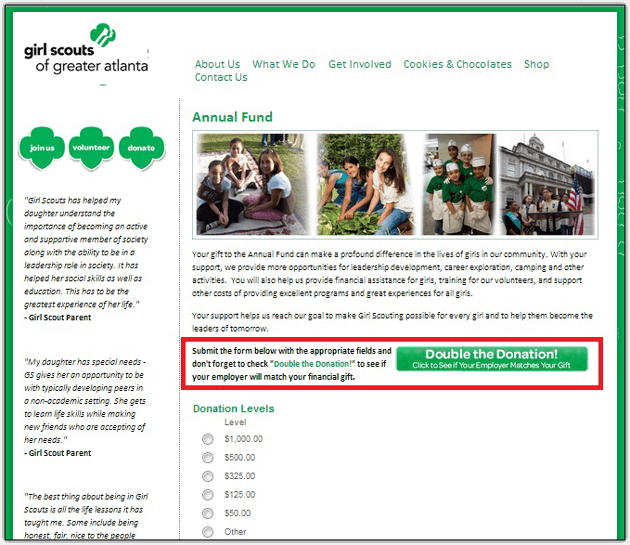

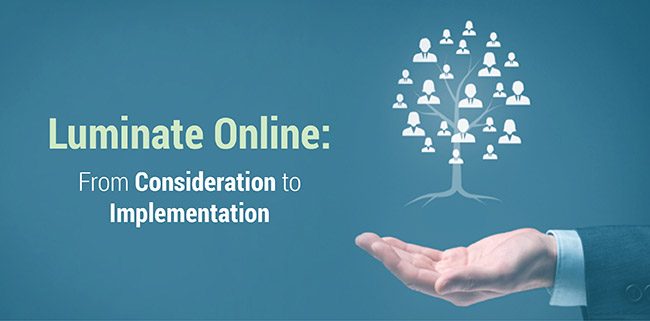



 4. Anticipate Integrations and Customizations Within Luminate.
4. Anticipate Integrations and Customizations Within Luminate.

